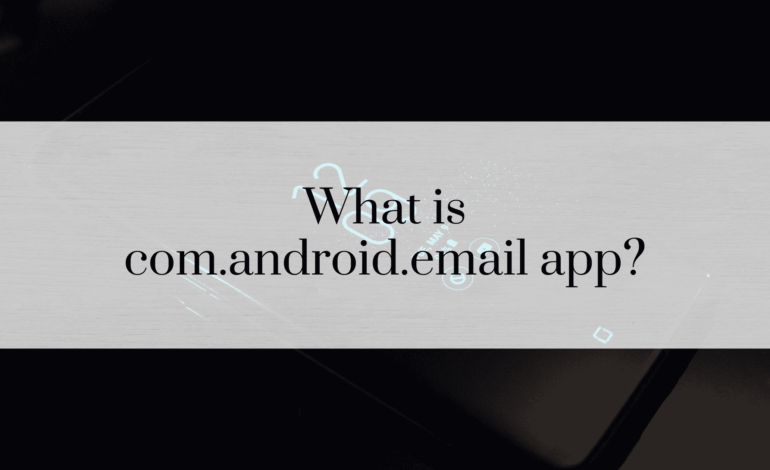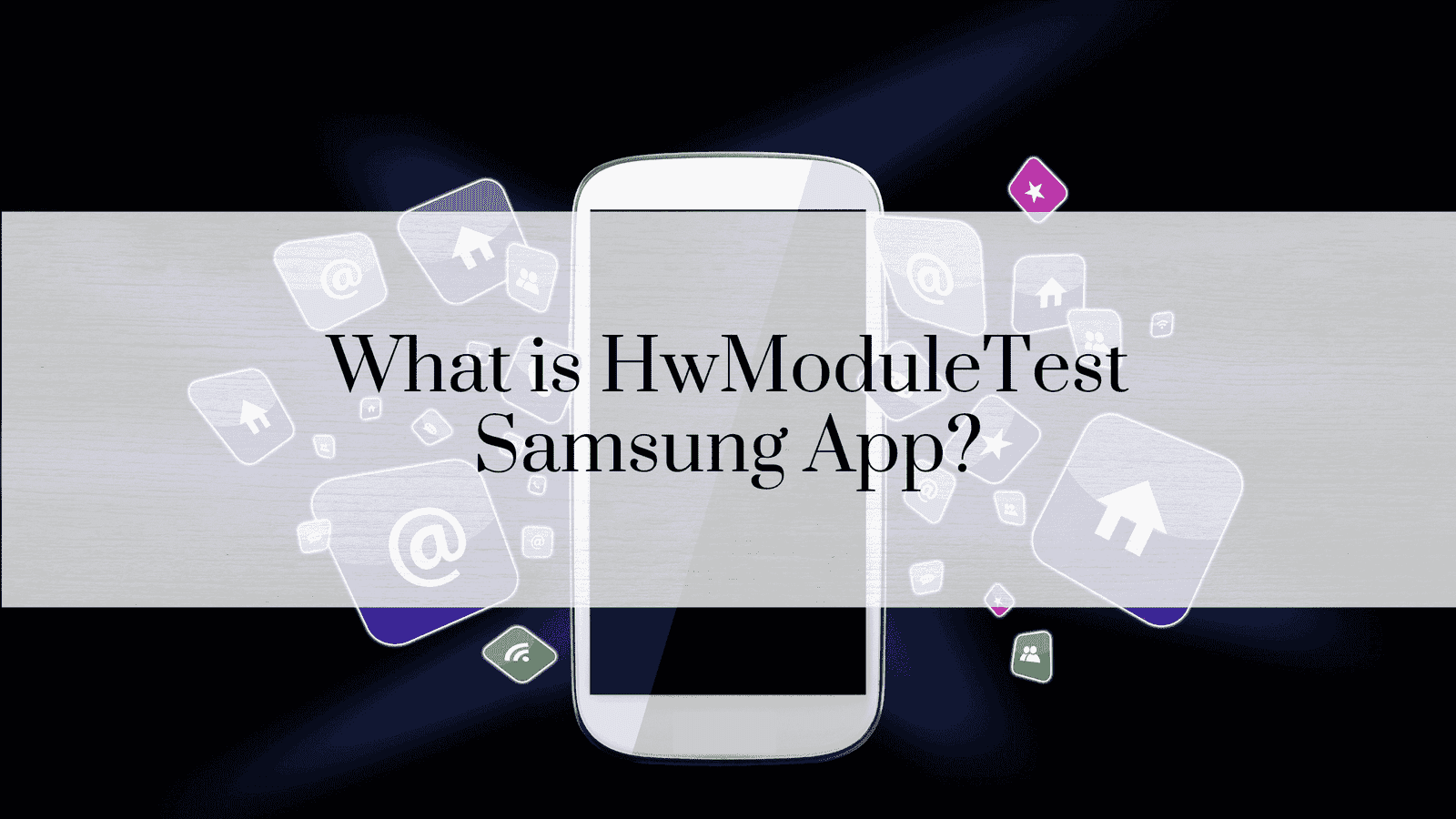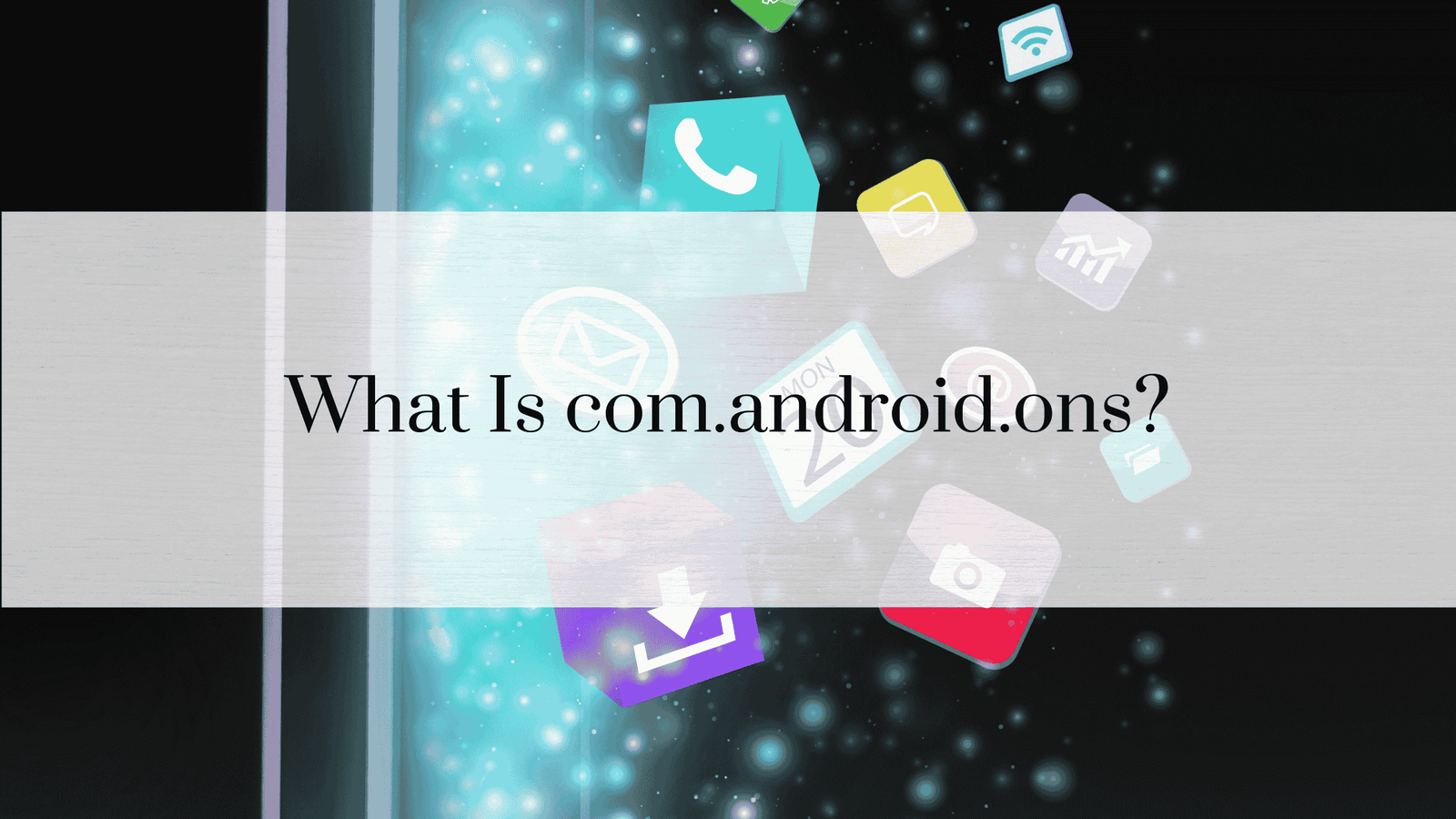What is com.android.email app?

In today’s fast-paced digital world, email is an indispensable communication tool. Most Android devices come pre-installed with a suite of applications designed to enhance user experience. Among them, you may have noticed an app or process labeled com.android.email. This article provides a detailed exploration of what com.android.email is, its purpose, functionalities, and its relevance in the Android ecosystem.
1. Introduction to com.android.email
The com.android.email app is a system application in many Android devices, primarily used to manage email accounts. It serves as the backbone for the default email client that comes pre-installed on your device.
This package is responsible for handling various tasks such as syncing emails, displaying notifications, and integrating calendar events with your email service.
2. Purpose of com.android.email
The primary purpose of com.android.email is to provide a seamless and efficient email experience on Android devices. It enables users to:
- Access multiple email accounts in one place.
- Sync emails, contacts, and calendars.
- Manage folders such as Inbox, Sent, and Drafts.
- Provide push notifications for new emails.
3. Key Features and Functionalities
The com.android.email app comes with various features aimed at improving email management:
- Multi-Account Support: Allows users to manage multiple email accounts, including personal and professional ones.
- Synchronization: Automatically syncs emails, contacts, and calendars across devices.
- Custom Notifications: Enables users to customize notifications for different accounts.
- Integration with Other Apps: Seamlessly integrates with other system apps like Calendar and Contacts.
- Offline Access: Provides access to previously downloaded emails even without an internet connection.
4. How com.android.email Works
The app operates by linking to your email service provider’s server, using protocols such as:
- IMAP (Internet Message Access Protocol): Allows real-time syncing of emails between the server and the client.
- POP3 (Post Office Protocol 3): Downloads emails to the device, removing them from the server.
- Exchange ActiveSync: Commonly used for syncing with enterprise email servers, including Microsoft Exchange.
Once connected, the app periodically checks for new emails and synchronizes your account data with the server.
5. Is com.android.email Necessary?
For many Android users, com.android.email is an essential tool. It is particularly useful for those who:
- Prefer using a built-in solution rather than downloading third-party email apps.
- Need a reliable way to sync their corporate or personal email accounts.
- Want to take advantage of tight integration with other Android features, such as notifications and widgets.
6. Common Issues with com.android.email
Despite its usefulness, users may encounter problems, including:
- Frequent Crashes: The app may crash due to corrupted data or system incompatibility.
- Synchronization Errors: Emails may fail to sync, leaving users with outdated inboxes.
- Battery Drain: Continuous background syncing can lead to higher battery consumption.
- Slow Performance: Over time, the app might slow down, particularly if it’s managing multiple accounts.
7. How to Troubleshoot com.android.email Problems
Here are some steps to resolve common issues:
- Clear Cache and Data:
- Go to Settings > Apps > com.android.email.
- Tap on Storage.
- Select Clear Cache and Clear Data.
- Update the App: Ensure that your device’s firmware and associated apps are up-to-date.
- Remove and Re-add Accounts:
- Go to Settings > Accounts.
- Remove the problematic email account.
- Re-add the account and configure it again.
- Restart Your Device: Sometimes, a simple restart can fix temporary glitches.
8. Security and Privacy Concerns
Security is a crucial consideration for any email app. com.android.email implements several measures to safeguard your data:
- Encryption: Data transmitted between your device and the email server is encrypted.
- Authentication: It requires your credentials to access your email account.
- App Permissions: It operates within the permissions granted by the user, such as access to storage and contacts.
However, users should ensure they are cautious, particularly when dealing with sensitive corporate or financial information.
Read: How to Remove com.android.smspush?
9. Difference Between com.android.email and Other Email Apps
com.android.email differs from other third-party apps in several ways:
- Pre-installed: Unlike Gmail or Outlook, this app comes pre-installed on many Android devices.
- Simplified Interface: It often features a straightforward interface designed for minimalistic use.
- System Integration: Offers deeper integration with Android features such as notifications, widgets, and the default calendar.
10. Can You Disable or Uninstall com.android.email?
Whether you can remove com.android.email depends on your device:
- Disable: On most devices, you can disable the app via Settings > Apps > com.android.email. This prevents it from running but keeps it installed.
- Uninstall: In some cases, particularly on rooted devices, you can fully uninstall it.
11. How to Replace com.android.email with Third-Party Apps
If you prefer alternative solutions, here are some popular third-party email apps:
- Gmail: Offers robust spam filtering and seamless integration with Google services.
- Outlook: Ideal for those who use Microsoft services.
- Yahoo Mail: Provides a user-friendly interface and ample storage.
To switch:
- Download the preferred app from the Play Store.
- Configure your email accounts within the new app.
- Disable notifications from com.android.email to avoid duplicates.
12. Optimizing com.android.email for Better Performance
To enhance performance:
- Reduce Sync Frequency: Set the app to sync less frequently.
- Limit Accounts: Remove inactive or unnecessary accounts.
- Disable Unnecessary Notifications: Turn off notifications for less critical accounts.
13. Is com.android.email Safe?
Yes, com.android.email is generally safe as it is a system application developed by or in collaboration with device manufacturers. However, users should always:
- Avoid opening suspicious emails or attachments.
- Keep their devices updated with the latest security patches.
14. FAQs about com.android.email
Q1: What is the difference between com.android.email and Gmail?
A1: While com.android.email is a general email client, Gmail is tailored specifically for Google accounts but can also handle other providers.
Q2: Why is com.android.email consuming a lot of battery?
A2: High battery usage can result from frequent background syncing. Adjust sync settings to reduce consumption.
Q3: Can I use com.android.email for my work email?
A3: Yes, it supports various protocols, including Exchange ActiveSync, commonly used in workplaces.
Q4: What happens if I disable com.android.email?
A4: You will no longer receive emails or notifications from accounts managed by the app.
Q5: Is com.android.email available on all Android devices?
A5: No, it’s typically found on devices with custom Android interfaces, like Samsung or LG.
Q6: How do I recover lost emails in com.android.email?
A6: Try syncing your account again or check the web version of your email service.
15. Conclusion – com.android.email app
The com.android.email app plays a vital role in the Android ecosystem, offering a robust solution for managing multiple email accounts. While it may not boast the advanced features of some third-party apps, its seamless integration with Android’s core functions makes it a reliable choice for many users. By understanding its functionalities, addressing common issues, and optimizing its performance, you can make the most of this system app.







